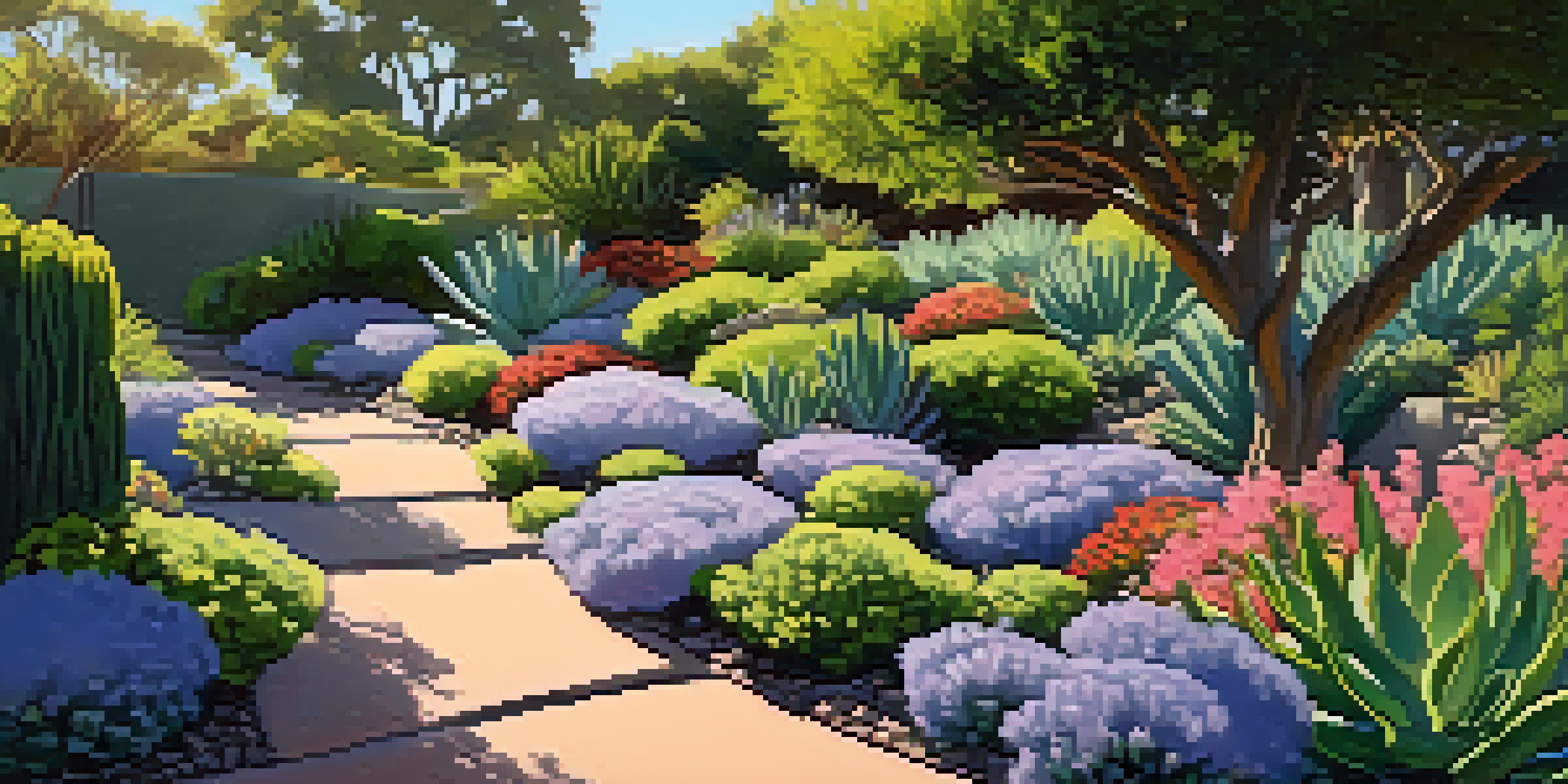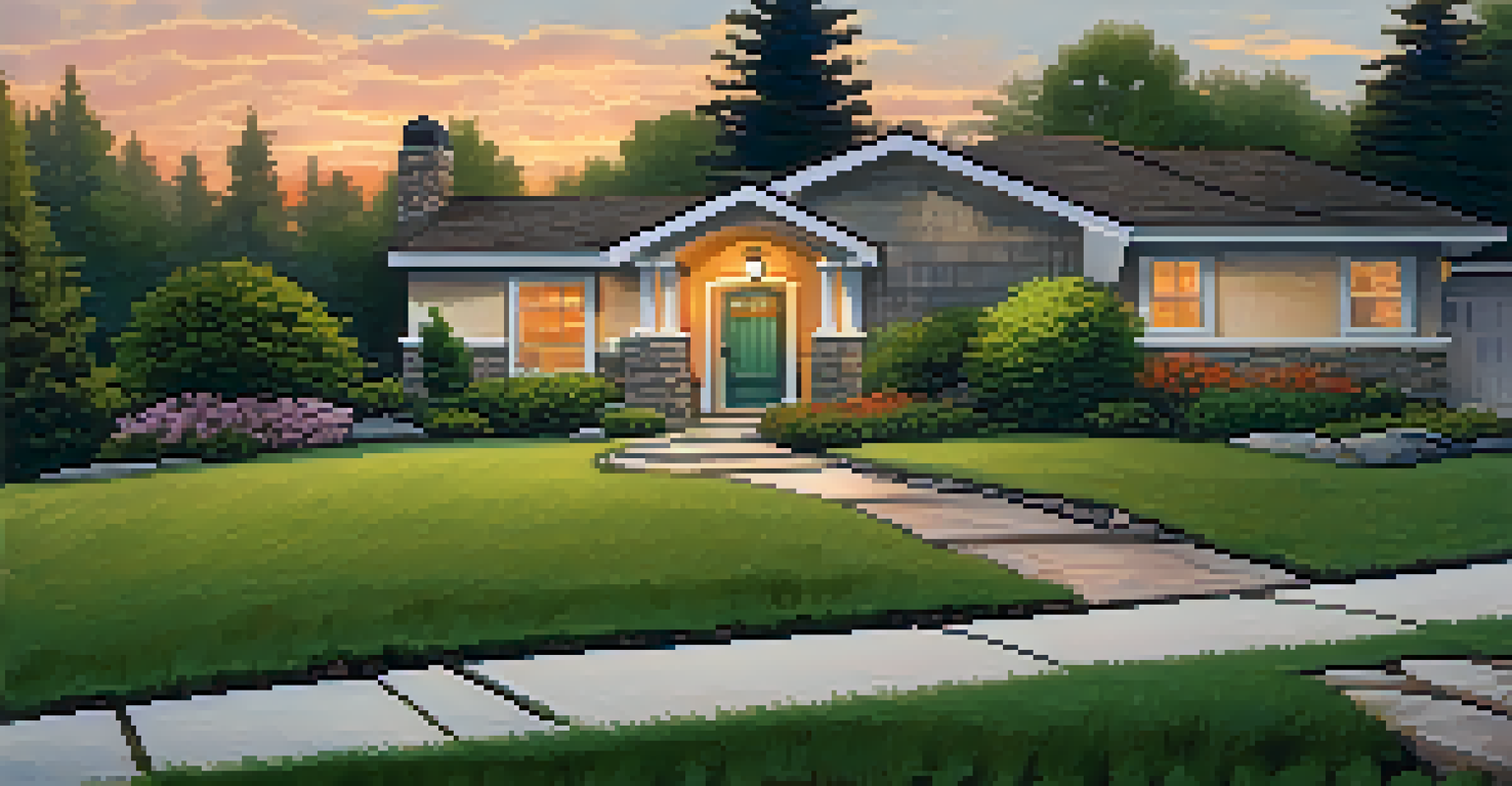Top 10 Fire-Resistant Landscaping Tips for Malibu Residents

Choose Fire-Resistant Plants for Your Garden
Selecting the right plants is crucial for fire-resistant landscaping. Opt for native species that are naturally more resilient to fire, such as California lilac or manzanita. These plants not only thrive in Malibu’s climate but also require less water, making them a sustainable choice.
The best time to plant a tree was 20 years ago. The second best time is now.
Incorporating drought-tolerant plants can significantly reduce the risk of fire. For example, succulents and other low-water plants can create beautiful yet safe gardens. This approach not only minimizes the fuel available for fires but also enhances the aesthetic appeal of your landscape.
Remember, even fire-resistant plants can ignite under extreme conditions. So, it's essential to maintain these plants properly by keeping them healthy and well-watered, especially during the dry season.
Create Defensible Space Around Your Home
Establishing a defensible space is a vital step in protecting your property from wildfires. This area should ideally extend 30 feet from your home, featuring minimal vegetation to reduce fire intensity. Consider clearing away dead leaves and debris regularly to prevent any accumulation that could serve as fuel.

Within this defensible space, keep trees trimmed and shrubs spaced apart. This arrangement decreases the likelihood of fire spreading to your home. You might think of it as creating a safety buffer that allows firefighters to operate effectively during emergencies.
Choose Fire-Resistant Plants
Opt for native, drought-tolerant plants to enhance your garden's fire resilience while minimizing water usage.
Incorporating hardscaping elements like gravel or stone pathways can also enhance your defensible space. These non-flammable materials provide a barrier and further reduce fire risk, ensuring your home remains as safe as possible.
Use Fire-Resistant Mulch for Your Beds
When selecting mulch for your garden beds, consider using fire-resistant options like gravel or stone. Unlike traditional wood mulch, these materials do not ignite easily and can significantly reduce fire risks. Not only do they keep your garden looking tidy, but they also enhance safety.
An ounce of prevention is worth a pound of cure.
Another benefit of using fire-resistant mulch is its ability to retain moisture in the soil. This is particularly important in Malibu’s dry climate, as it helps keep plants hydrated while reducing the chances of combustion. Think of it as a protective layer that nurtures your garden while enhancing its resilience.
Plus, using non-flammable mulch can minimize the spread of embers during a wildfire. By investing in the right kind of mulch, you're making an easy yet effective choice for fire safety in your landscaping.
Install Hardscaping Features for Fire Safety
Incorporating hardscaping elements into your landscape design can provide significant fire protection. Consider features like patios, walkways, and retaining walls made from non-combustible materials. These elements not only serve practical purposes but also create beautiful outdoor spaces.
Using materials such as concrete, stone, or brick can help slow down the spread of fire and offer a safe zone for firefighters. A well-planned hardscape can act as a barrier, protecting your home from radiant heat and flying embers during a wildfire.
Create Defensible Space
Establishing a defensible space around your home reduces fire intensity and improves safety during wildfires.
Additionally, hardscaping reduces the amount of combustible vegetation around your home. By thoughtfully integrating these features into your landscape, you're actively enhancing the fire resilience of your property.
Maintain Your Landscape Regularly
Regular maintenance of your landscape is key to keeping it fire-resistant. This includes trimming overgrown plants, removing dead vegetation, and keeping your lawn mowed. By proactively caring for your landscape, you're reducing potential fire hazards.
Consider scheduling seasonal clean-ups to ensure your yard remains in optimal condition. This practice not only keeps your landscape looking its best but also helps you catch any potential fire risks before they escalate. Think of it as giving your garden a health check-up.
In addition to routine maintenance, be on the lookout for any invasive species that could increase fire risk. Staying vigilant about what’s growing in your yard can make all the difference when it comes to fire safety.
Install Fire-Resistant Fencing
If you’re considering a fence for your property, opt for fire-resistant materials like metal or masonry. These materials can withstand high temperatures and help prevent the spread of fire to your home. A sturdy fence can act as a protective barrier, giving you peace of mind.
While wood fences are common, they can easily ignite and become a fire hazard. By choosing non-combustible options, you’re not only enhancing safety but also adding an attractive feature to your landscape. Imagine a sleek metal fence that complements your home while providing fire protection.
Install Irrigation Systems
Implementing an irrigation system helps maintain healthy plants and lowers the risk of them becoming flammable.
Additionally, maintaining your fence is essential. Regularly check for any signs of damage or wear that could compromise its integrity. By staying proactive, you ensure your fencing remains a strong line of defense.
Consider Irrigation Systems for Fire Safety
Installing an irrigation system can be a game-changer for fire-resistant landscaping. A consistent watering schedule helps keep plants healthy and reduces the likelihood of them drying out and becoming flammable. Think of it as a lifeline for your landscape during the dry months.
Drip irrigation systems are particularly effective because they deliver water directly to the plant roots, minimizing evaporation. This targeted approach not only conserves water but also ensures that your plants are adequately hydrated, enhancing their ability to resist fire.

Moreover, maintaining a well-watered landscape creates a buffer against fire. If your plants are lush and thriving, they’re much less likely to become fuel for a wildfire. This proactive strategy supports both your garden's health and your home’s safety.
Educate Yourself and Your Neighbors About Fire Safety
Knowledge is power when it comes to fire safety. Take the time to educate yourself about fire-resistant landscaping techniques and share this information with your neighbors. By working together as a community, you can create a safer environment for everyone.
Consider organizing neighborhood workshops or sharing resources online to spread awareness. Engaging with your community not only fosters relationships but also empowers everyone to take part in fire prevention efforts. It’s like building a safety net that protects all of us.
Additionally, stay informed about local fire regulations and resources available in your area. Understanding these guidelines can help you make informed decisions about your landscaping choices, ensuring your property remains as fire-resistant as possible.